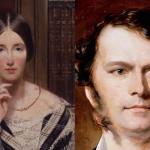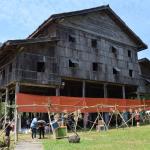The Chinese History Museum is an unassuming building located at Kuching Waterfront. Built in 1912, it originally served as a courthouse for the Chinese community from 1912 to 1921.
This was where the Chinese community handled their disputes from marriages to divorces and even division of property.
The third White Rajah, Charles Vyner Brooke wanted the Chinese community to manage their own affairs and so Ong Tiang Swee was selected as the first chairman and assisted by six judges elected annually from the community.
Inspired by English colonial architecture, the museum was known as the Chinese Chamber of Commerce building.
In 1993, the building was reopened and is what we know today as the Chinese History Museum.
A relatively small building (the hall itself is 46 square feet), this museum gives valuable insight on the livelihoods and the economic and historical contributions of the Chinese community in Sarawak.
The Chinese History Museum exhibit
The start of the exhibition educates visitors on how the Chinese immigrated to Sarawak.
In fact, the first wave of Chinese immigrants who landed in Sarawak in the 15th century were mainly the Hakkas.
They first settled in Pontianak, Sambas, and Singkawang before migrating to what we know now as the Bau area.
Then, the second wave of Chinese immigrants landed in Kuching even before James Brooke’s arrival. They were the Teochews and the Hokkiens.
Apart from that, the exhibition highlights some of the pioneering community leaders including Liu Shan Bang, Ong Tiang Swee and Ong Ewe Hua.
There are other modern Chinese leaders featured as well such as former deputy chief minister George Chan and James Wong, who holds the record as the longest serving assemblyman in the history of Sarawak (he held the office for nearly 50 years).
Although the Chinese in Sarawak travelled thousands of miles away from mainland China hundreds of years ago, the communities here still retain most of their ancestral culture.
Other aspects of their culture that they brought include the Chinese musical instruments found in Sarawak.
The Chinese History Museum showcases a handful of musical instruments such as Liu Qin, Er Hu, Yang Cin, Qin Qin and many more.
Other interesting exhibits found were an intricate ceramic lunch box and a pillow for smoking opium.
Some room for improvement…
Sadly, there were some disappointing aspects when KajoMag visited the museum in April 2018.
For starters, some of the lights were not working at all and some light bulbs were flickering, exuding that haunted house feel.
Most of the audio interactive systems like the sounds of the various musical instruments and dialects were not working, and some of the exhibits were dusty and not properly described.
Given the strategic location at Kuching waterfront which is a popular tourist attraction, a little bit of more care and attention could go a long way for this small yet important museum.







































